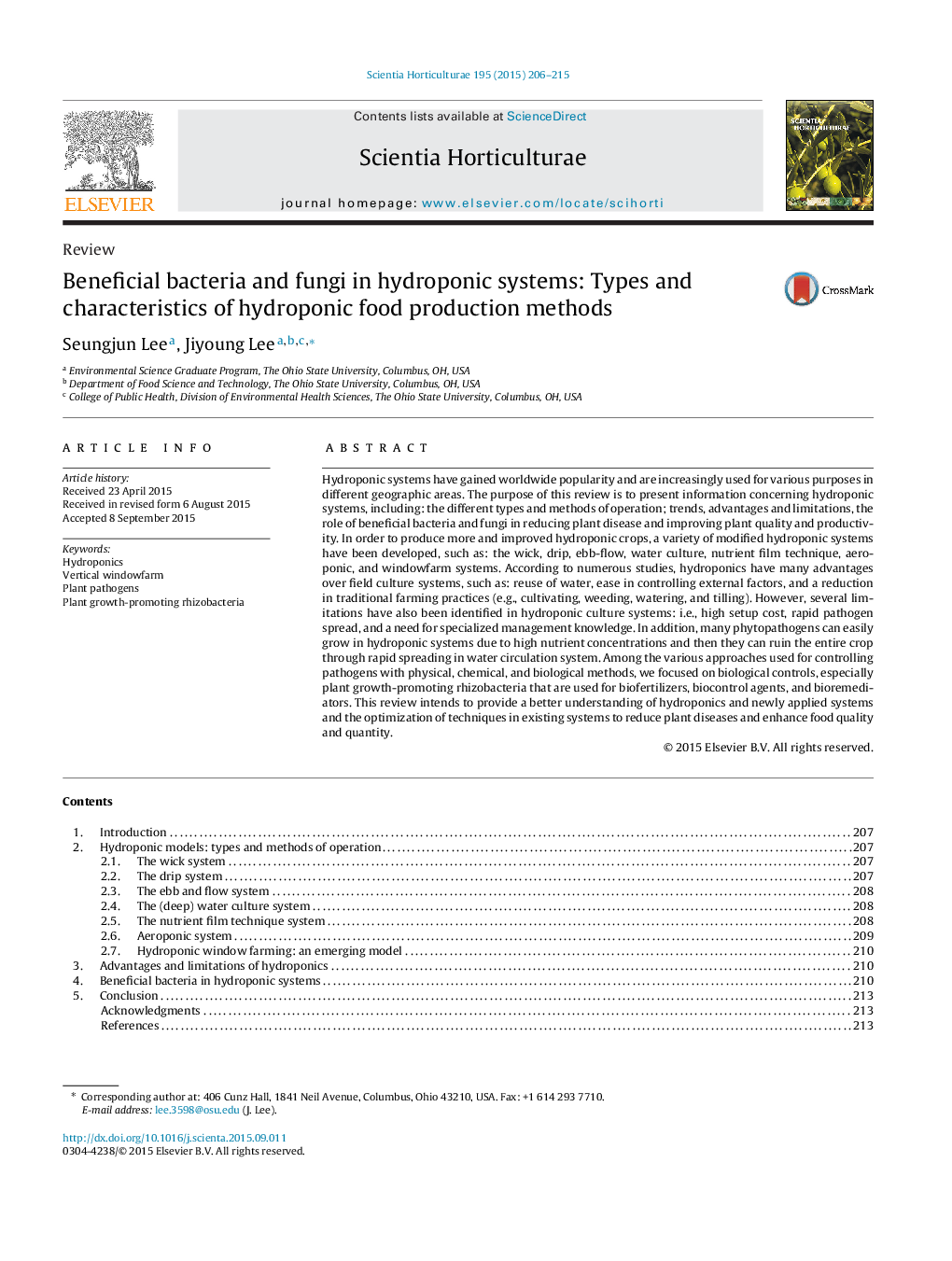| کد مقاله | کد نشریه | سال انتشار | مقاله انگلیسی | نسخه تمام متن |
|---|---|---|---|---|
| 6407011 | 1628803 | 2015 | 10 صفحه PDF | دانلود رایگان |
- The usage of hydroponic systems has increased significantly because of its notable advantages over soil cultures.
- Various hydroponic systems have been developed to solve limitations, but some problems still exist.
- The role of beneficial bacteria in hydroponic systems is important to prevent phytopathogens and promote crop yield.
- Development of new hydroponic systems is needed in harsh climates or areas with limited space.
Hydroponic systems have gained worldwide popularity and are increasingly used for various purposes in different geographic areas. The purpose of this review is to present information concerning hydroponic systems, including: the different types and methods of operation; trends, advantages and limitations, the role of beneficial bacteria and fungi in reducing plant disease and improving plant quality and productivity. In order to produce more and improved hydroponic crops, a variety of modified hydroponic systems have been developed, such as: the wick, drip, ebb-flow, water culture, nutrient film technique, aeroponic, and windowfarm systems. According to numerous studies, hydroponics have many advantages over field culture systems, such as: reuse of water, ease in controlling external factors, and a reduction in traditional farming practices (e.g., cultivating, weeding, watering, and tilling). However, several limitations have also been identified in hydroponic culture systems: i.e., high setup cost, rapid pathogen spread, and a need for specialized management knowledge. In addition, many phytopathogens can easily grow in hydroponic systems due to high nutrient concentrations and then they can ruin the entire crop through rapid spreading in water circulation system. Among the various approaches used for controlling pathogens with physical, chemical, and biological methods, we focused on biological controls, especially plant growth-promoting rhizobacteria that are used for biofertilizers, biocontrol agents, and bioremediators. This review intends to provide a better understanding of hydroponics and newly applied systems and the optimization of techniques in existing systems to reduce plant diseases and enhance food quality and quantity.
Journal: Scientia Horticulturae - Volume 195, 12 November 2015, Pages 206-215
